Transcript
3 interesting ways to use the Sustainable Development Goals
Hi, Alex here. In 2015, the United Nations set up 17 sustainable development goals (also known as SDGs) that were adopted by 193 countries and our mission is to achieve these goals by 2030. In this video we are going to talk about the SDG wedding cake and two other interesting ways you can use these goals to see if your country or your business is sustainable. Ok, let’s get drawing!
On this channel, we share tools to help YOU change the world so subscribe if that’s of interest to you.
To be totally honest, the problem with these 17 goals is that… well, there are 17 of them… which can make them look complicated and not easy to remember. But the good thing about them, is that they are the result of many public consultations and they provide a shared language for all countries to report on. They also cover a lot of important things and they can tell us if we are becoming sustainable. Or do they? First, let’s look at how they are interconnected instead of looking at them individually.
1- The SDG wedding cake
The Stockholm Resilience Centre suggested organizing the SDGs into 3 layers: the environment as the foundation, supporting society which supports the economy. This is like the triple bottom line (or the 3 pillars of sustainability) I presented in another video (I put the link in the description below). Essentially, sustainability is about meeting human needs within ecological constraints, and the economy is a strategy to make money while achieving sustainability. There are 4 goals about the environment: life below water, climate action, life on land and life below water. 8 goals are about society: No Poverty, Zero Hunger, Good Health and Well-being, Quality Education, Gender Equality, Affordable and Clean Energy, sustainable cities & communities and peace, justice and strong institutions. And these 4 goals are about the economy: Decent Work and Economic Growth, Industry, Innovation, and Infrastructure, Reduced Inequalities, Responsible Consumption and Production. They called this representation the SDG wedding cake. In other words, we can’t achieve “decent economic growth” or even food security without first taking care of our oceans as was demonstrated in Newfoundland during the collapse of the Atlantic cod fishery in the 1990s. And, to use the more recent example of the coronavirus crisis, we can’t have everybody in “good health” and achieve “no poverty” without taking care first of our land, forests and our greenhouse gas emissions. My video on coronavirus explains this in more details.
2- Which country is more sustainable?
With the 17 goals, come targets and indicators. I am not going to bore you with all the 169 targets and 232 indicators but if we look at the “affordable and clean energy” goal as an example, it has 5 associated targets which read like this: By 2030, ensure universal access to affordable, reliable and modern energy services; By 2030, increase substantially the share of renewable energy in the global energy mix; By 2030, double the global rate of improvement in energy efficiency, etc. And we can look at the performance of each country by indicator on this website https://dashboards.sdgindex.org/ It looks like this for the United States for instance.
If a country is doing well on the SDGs, does that mean that they are more sustainable? Let’s look at the top of the list: all these European countries are doing really well on poverty, health, education, etc. but they also have some of largest ecological footprints per capita in the world. Although it is interesting to look at each individual target and indicator to see how a country is doing on individual goals, looking at the aggregate score of a country can be misleading as developed countries look better as a whole but tend to use a lot more resources and contribute more to climate change.
To break down sustainable development into all its dimensions, these 17 goals are great. But if you are trying to make a plan for a country to become sustainable, I would recommend using these first order principles for sustainability that are grounded in science: 3 ecological ones and 5 social ones. They are necessary, sufficient and non-overlapping. Once we comply with these principles, we are truly sustainable. I included the video links in the description below.
3- Applying the SDGs to your business
If you are using these 17 goals to see if your company is becoming sustainable, Future-Fit Business offers a holistic benchmark for companies to assess their social and environmental impacts. This benchmark has break-even goals and positive pursuits beyond the goals that you can organize by SDG or by topic. Let’s look at waste for instance: for waste to not exist anymore, “operational waste is eliminated” has an action guide to help you prioritize your actions and monitor progress and also to show the sustainable development goals that it contributes to. Imagine that the purpose of your business is to contribute to these SDGs, you can organize them like this: environmental goals, employee goals and community goals.
There is a lot of work that needs to happen to achieve the 2030 agenda worldwide but it is important to remember that if the environment is fragile, it can literally crash the wedding… cake.


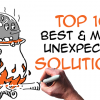
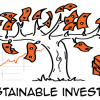
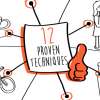
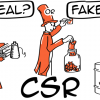
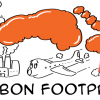
Another excellent video, thanks Alex. Inspiring and informative as always!
Thanks Catherine!
Thanks, Alex. Very informative and easy to understand.
That’s good to hear. Thanks for the feedback Agustin!